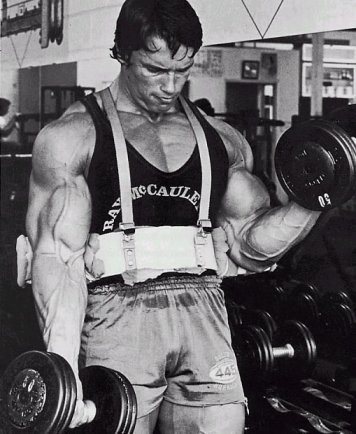People love to dissect and analyze lifting weights.
I think this is a good thing, especially from a hypertrophy or “bodybuilding” perspective.
Anyone who’s been at this a while will tell you there’s more to building muscle (and staying healthy) than just “picking up the weights and putting them down.”
Like so many things in life, how you do something is just as important as what you do. And in bodybuilding, the “how” is MORE important than what, why, or when.
But often the analysis of “how” an exercise is performed is limited to nit-picking technique or evaluating how hard the lifter worked.
Did they stop short of failure? Go past failure? Go WAY past failure and suffer an aneurism in front of the dumbbell rack?
What’s lost or at least ignored is FOCUS.
In the 80’s-90’s the Weider writers called it the “mind muscle connection.” The following decade, people mocked this expression, calling it bro-science and meathead logic.
Interestingly, these same non-bodybuilders also mocked direct arm work, isolation exercises, and sets above 5 reps but that’s another rant.
Fast forward to today and the “mind muscle connection” is being shown to be the real deal in legitimate studies (thank you Brad Schoenfeld).
It’s crucial. An experienced, focused lifter can create more muscular tension and “get more” out of a set, even a set that stops short of total failure. And this pays big dividends as you get older and/or stronger and managing recovery vs. junk volume becomes a bigger issue.
So how do conjure up some focus? Practice the Ten Second Rule.
In the lead time before you perform a set, specifically in the final 10 seconds before you get up and grab the barbell/dumbbells/attachement, mentally rehearse what’s about to occur:
– If you were filming yourself, how would you want the exercise to look?
– Where should you feel this exercise?
– What points on the range of motion do you want to emphasize (deep stretch, peak contraction, slow eccentric, etc).
– How many reps do you think you can do, or better yet, know that you can do?
– Are you going to extend the set beyond failure? Is this going to be your best set? If so, then make it so.
It sounds like a lot and you might 20 or 30 seconds to really “get in the zone,” but you don’t need to sustain this level of focus. That would be impossible.
Arnold and his crew would laugh and joke between sets but when the time came to do the actual work, it was all business.
Give it a go. You’ll find you need fewer sets to “get the job done” and probably add a rep or two to your personal best in the process.
It also makes training more meditative and as a result, more rewarding all around.

